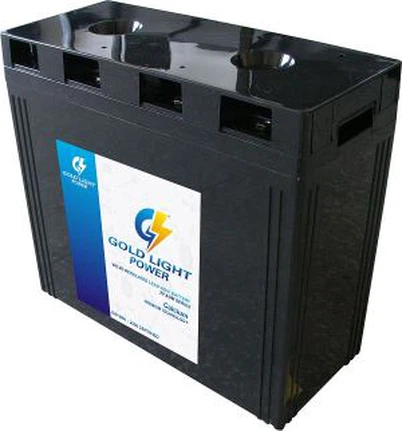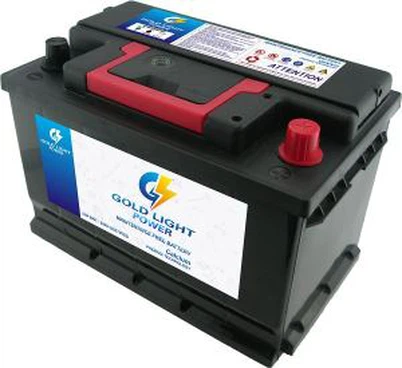What is the recovery time of a Gel Battery after deep discharge?
Leave a message
What is the recovery time of a Gel Battery after deep discharge?
As a supplier of Gel batteries, I often get asked about the recovery time of these batteries after a deep discharge. Gel batteries are a type of valve-regulated lead - acid (VRLA) battery that uses a gel - type electrolyte. They are popular in various applications, including solar power systems, UPS systems, and electric vehicles, due to their maintenance - free nature, long service life, and good deep - discharge recovery characteristics.
Understanding Deep Discharge
Before delving into the recovery time, it's important to understand what a deep discharge is. A deep discharge occurs when a battery is discharged to a very low state of charge, typically below 20% of its rated capacity. For a 12 - volt Gel battery, this might mean the battery voltage dropping to around 10.5 volts or lower. Deep discharges can happen due to various reasons, such as extended use without recharging, a malfunction in the charging system, or in some cases, deliberate deep cycling for testing purposes.
Factors Affecting Recovery Time
The recovery time of a Gel battery after a deep discharge is influenced by several factors:
1. Depth of Discharge
The more deeply a battery is discharged, the longer it will take to recover. A battery that has been discharged to 10% of its capacity will take much longer to recharge than one that has been discharged to 30%. For example, if a 12V24AH Solar Battery Sealed GEL Battery Standard Vrla Products 12V24AH Solar Battery Sealed GEL Battery Standard Vrla Products is discharged to 10% capacity, it will have lost a significant amount of stored energy, and the charging process will need to replenish this large deficit.
2. Charging Current
The charging current plays a crucial role in determining the recovery time. A higher charging current can reduce the recovery time, but there are limits. Gel batteries are sensitive to high - current charging. If the charging current is too high, it can cause overheating, which may damage the battery and reduce its lifespan. A typical charging current for Gel batteries is usually in the range of 0.1C to 0.2C, where C is the battery's capacity. For a 12V38AH Solar GEL Battery Standard Storage Battery Products 12V38AH Solar GEL Battery Standard Storage Battery Products, a charging current of 3.8A to 7.6A would be appropriate.
3. Battery Temperature
Temperature also affects the recovery time. Gel batteries charge more efficiently at moderate temperatures. At low temperatures, the chemical reactions inside the battery slow down, which can significantly increase the recovery time. On the other hand, high temperatures can cause the electrolyte to evaporate and may lead to premature aging of the battery. The optimal charging temperature for Gel batteries is between 20°C and 25°C.
4. Battery Age and Condition
An older battery or one that has been subject to repeated deep discharges may take longer to recover. Over time, the internal components of the battery, such as the plates and the electrolyte, degrade. This degradation can reduce the battery's ability to accept a charge quickly and efficiently.
Estimating Recovery Time
To estimate the recovery time of a Gel battery after a deep discharge, we can use a simple formula. The time (T) in hours to recharge a battery is given by:
[T=\frac{Q}{I}]


where (Q) is the amount of charge to be replaced (in amp - hours) and (I) is the charging current (in amperes).
For example, if a 12V24AH Gel battery has been deeply discharged to 10% of its capacity, it has lost (0.9\times24 = 21.6) amp - hours of charge. If we use a charging current of 2.4A (0.1C), the estimated recovery time would be (\frac{21.6}{2.4}=9) hours.
However, this is a simplified calculation. In reality, the charging process is not 100% efficient, and there are other factors such as the battery's internal resistance and the charging algorithm that need to be considered.
Charging Stages and Their Impact on Recovery
Gel batteries typically go through several charging stages during the recovery process:
1. Bulk Charging
In the bulk charging stage, the charger supplies a relatively high current to the battery to quickly replenish a large portion of the lost charge. This stage usually lasts until the battery reaches about 80% of its full charge. During this stage, the charging voltage is gradually increased, but it is kept below the gassing voltage to prevent excessive gas generation.
2. Absorption Charging
Once the battery reaches 80% charge, the charger switches to the absorption charging stage. In this stage, the charging voltage is held constant, and the charging current gradually decreases as the battery approaches full charge. This stage is crucial for ensuring that the battery is fully charged and for equalizing the charge across all the cells in the battery.
3. Float Charging
After the absorption stage, the battery enters the float charging stage. In this stage, the charger maintains a low, constant voltage to keep the battery fully charged and to compensate for self - discharge. Float charging is a long - term maintenance stage that helps to extend the battery's lifespan.
Each of these charging stages adds to the overall recovery time of the battery. The bulk charging stage is relatively fast, but the absorption and float charging stages can take several hours to complete.
Best Practices for Faster Recovery
To minimize the recovery time of Gel batteries after a deep discharge, the following best practices should be followed:
- Use a Proper Charger: Make sure to use a charger specifically designed for Gel batteries. These chargers are programmed to provide the correct charging voltage and current at each stage of the charging process.
- Maintain Optimal Temperature: Keep the battery at a moderate temperature during charging. If necessary, use a temperature - compensated charger that adjusts the charging parameters based on the battery temperature.
- Avoid Over - Discharging: Try to prevent deep discharges whenever possible. Use a battery management system to monitor the battery's state of charge and to prevent it from being discharged below a safe level.
Conclusion
The recovery time of a Gel battery after a deep discharge is a complex process that depends on multiple factors such as the depth of discharge, charging current, battery temperature, and the battery's age and condition. As a Gel battery supplier, I understand the importance of providing customers with accurate information about battery performance and recovery times.
If you are considering purchasing Gel batteries for your application, whether it's for a solar power system, a UPS, or an electric vehicle, I encourage you to contact me for more detailed information. I can help you select the right battery for your needs and provide guidance on proper charging and maintenance to ensure optimal performance and a long service life. Let's start a conversation about your battery requirements and how we can work together to meet them.
References
- Linden, D., & Reddy, T. B. (2002). Handbook of Batteries. McGraw - Hill.
- Berndt, D. (2011). Valve - Regulated Lead - Acid Batteries. Wiley - Interscience.





